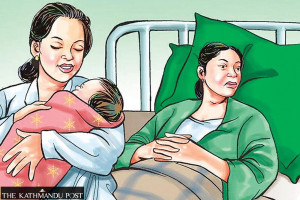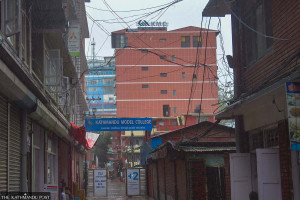Health
Thousands of 12-23 month olds deprived of vaccines
Experts term the situation ‘alarming’ as it could imperil years of achievements Nepal has made in child health.
Arjun Poudel
At least four percent of the children aged 12 to 23 months have received no vaccination, according to the Nepal Demographic and Health Survey-2022 carried out by the Ministry of Health and Population.
This figure was just one percent in 2016, and the rapid surge in the number of unvaccinated children poses a serious threat to the overall achievements the country has made over the years in immunisation through huge investments, child health experts warn.
“This is alarming,” said Dr Jhalak Gautam, former chief of the Immunisation Section at the Family Welfare Division under the Department of Health Services. “We are at risk of outbreaks of multiple vaccine-preventable diseases. All our achievements in child health are at risk.”
Health officials say around 600,000 babies are born in Nepal every year; around 24,000 of them do not receive any vaccine.
The nationwide study carried out between January 5 and June 22 this year with technical as well as financial support from the United States Agency for International Development, also shows that only 80 percent of the children aged between 12 and 23 months are fully vaccinated with basic antigens.
A little more than half the children aged 12–23 months (52 percent) are fully vaccinated according to the national schedule, says the report.
The government provides 13 types of vaccines through the national immunisation programme. Earlier, only 11 antigens were included in the programme. Later, the Ministry of Health and Population added rotavirus and typhoid vaccines to the regular immunisation list. There are more than 16,000 immunisation clinics across the country.
The percentage of children aged 12-23 months who are fully vaccinated (received all basic antigens) has fluctuated over time, rising from 43 percent in 1996 to a peak of 87 percent in 2011, then decreasing to 78 percent in 2016, and increasing slightly to 80 percent in 2022.
“The percentage of children aged between 12 and 23 months who did not receive any vaccinations has also fluctuated, notably increasing slightly from one percent in 2016 to four percent in 2022,” said the report.
The Nepal Demographic and Health Survey is carried out every five years, the last one in 2016. The latest study was delayed due to the Covid-19 pandemic.
According to the report, the immunisation coverage rate in Madhesh Province is only 68 percent, which means 32 percent of children in the province have not taken all the vaccines. It is the lowest of all the seven provinces.
Gandaki Province has a 93 percent vaccine coverage rate, the highest in the country. The vaccine coverage in Sudurpaschim Province, which is considered less developed and less educated, is 89 percent.
The vaccination coverage rate is 81 percent in Province 1, 83 percent in Bagmati Province, 85 percent in Lumbini Province, and 84 percent in Karnali Province.
Compared to far-flung villages in remote districts, big cities like Kathmandu and Lalitpur, and emerging cities are more challenging in terms of implementing health programmes, according to officials.
"Floating population, scattered slums, working-class people, lack of awareness and poor access to health workers could be the reasons for the low vaccine coverage rate,” said Dr Chandeshwar Mahaseth, a child health expert. “Also, the Covid-19 pandemic that upended lives is responsible for the low childhood vaccine coverage rate.”
Similarly, the federal system of governance under which there are three tiers of government—federal, provincial and local—could have created confusion and negatively impacted child vaccination, according to experts.
Earlier, there was a separate central body to promote vaccinations, but now this has shifted to various bodies under provincial and local governments.
“Agencies concerned may not have been discharging their duties sincerely, and federal agencies too might not have been able to make the subordinate agencies aware of the issue’s seriousness,” said Gautam, a former chief of the Immunisation Section.
Immunisation is the most cost-effective and efficient way to control and eliminate vaccine-preventable diseases that contribute to childhood illnesses and deaths.




 28.26°C Kathmandu
28.26°C Kathmandu

















